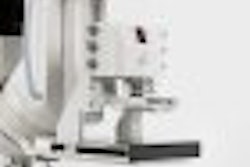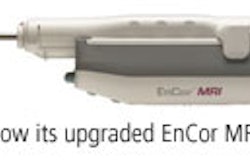In the classic song "New York, New York," Frank Sinatra and company proclaim that "the Bronx is up and the Battery's down." The same could be said for breast imaging in the U.S., with ultrasound representing the Bronx and diagnostic mammography standing in for the Battery.
The trends are real, according to a study from the Center for Research on Utilization of Imaging Services (CRUISE) at Thomas Jefferson University in Philadelphia.
"The goal of this particular study was to look at trends in the utilization rate of various types of breast imaging in recent years," said Dr. David Levin in a presentation at the 2006 RSNA meeting in Chicago.
For this research, databases for Medicare Part B were mined from 1996 to 2004. Utilization rates per 1,000 female Medicare beneficiaries were calculated for the CPT codes that apply to screening and diagnostic mammography, breast ultrasound, and breast MR. All specialty providers were included.
According to the results, during the time period assessed, the total utilization of all mammography increased by 45% to 385 per 1,000 female Medicare beneficiaries.
However, the rate of increase differed quite dramatically: From 1996 to 2000, the rate jumped 40%; from 2000 to 2004, it only increased by another 3%, the authors said.
"From '97-'98, there was a rather sharp jump," Levin said. "If you think back, that was a period of time when a lot of public health initiatives were directed at women to increase the awareness of women to the importance of breast cancer screening."
A reduction in these public health programs may have influenced the dip, as well as other factors such as decreased access to screening facilities, a shortage of breast imagers, and lower reimbursement rates, the authors stated.
The utilization rate for diagnostic mammography dropped by 39%, while the rate for screening mammography went up by 157%. Also, the rate of breast ultrasound rose by 116%.
While the difference in the two types of mammography most likely reflects a change in CPT coding protocols, the rise in breast ultrasound's popularity was genuine with the modality used more than once for every three diagnostic mammograms, Levin said.
Virtually all of the growth in breast imaging was seen in the late 1990s, Levin said. As for who performed these studies, radiologists still held on to 95% of all breast imaging exams. Broken down by modality, 94% of mammographic exams were done by radiologists, who also performed 89% of sonographic tests (surgeons came in second in this category).
Finally, the growth in MR use was very low, shifting slightly from 0.06 per 1,000 women in 1996 to 0.29 per 1,000 in 2004. However, the use of breast MR will continue to "accelerate rapidly," Levin said.
Dr. Wendie Berg, principal investigator for the American College of Radiology Imaging Network ultrasound screening trial (ACRIN 6666), asked Levin if his group had noted any shifts in the use of ultrasound by nonradiologists. Levin said that the number of nonradiologists who used breast ultrasound was very low, around 7%, making it difficult to pinpoint a meaningful trend.
In answer to RSNA session moderator Dr. Barbara Monsees' question, Levin said that this particular Medicare database did not track patient demographics -- age, income level, insurance -- and how those factors affected screening trends.
By Shalmali Pal
AuntMinnie.com staff writer
January 8, 2006
Related Reading
Does gender, experience influence reader FP rates in mammography screening? December 13, 2006
Cardiac imaging dazzles, but radiologists can't compete alone, April 10, 2006
Radiologists maintain dominance in breast biopsy procedures, January 10, 2006
Copyright © 2007 AuntMinnie.com



















